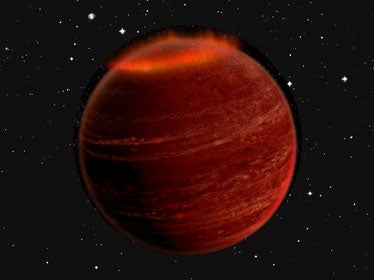The Independent's journalism is supported by our readers. When you purchase through links on our site, we may earn commission.
'Northern Lights' aurora discovered outside the solar system for the first time
The light display was detected around a brown dwarf 20 light years away

An aurora with a glow resembling the Earth's Northern Lights has been spotted outside the solar system for the first time.
Astronomers found the aurora light display around a brown dwarf 20 light years away.
Dr Stuart Littlefair, from the University of Sheffield, told the BBC it was the first confirmed sighting of such a phenomenon.
A brown dwarf is known as a ‘failed star’. It is an object too small to become a star but bigger than a planet.
But as the aurora - discovered using radio and optical telescopes - is a similar phenomenon to the Earth's Northern Lights, the discovery provides further evidence to suggest that brown dwarfs are more similar to planets.
Dr Littlefair said: “Brown dwarfs span the gap between stars and planets and these results are yet more evidence that we need to think of brown dwarfs as beefed-up planets, rather than ‘failed stars’.”
He said it was already known that brown dwarfs had cloudy atmospheres like planets, but the discovery showed they also hosted "powerful auroras".
The findings are reported in the journal Nature.
The aurora light display - created when charged particles enter the planet's magnetic field and collide with gas atoms in the atmosphere – is however thousands of times brighter than the Northern Lights and more red than green in colour.
The California Institute of Technology's Dr Gregg Hallinan, a lead scientist on the project, said: "We're finding that brown dwarfs are not like small stars in terms of their magnetic activity; they're like giant planets with hugely powerful auroras."
The auroras, he said, were, "hundreds of thousands of times more powerful than any detected in our solar system".
Join our commenting forum
Join thought-provoking conversations, follow other Independent readers and see their replies
Comments